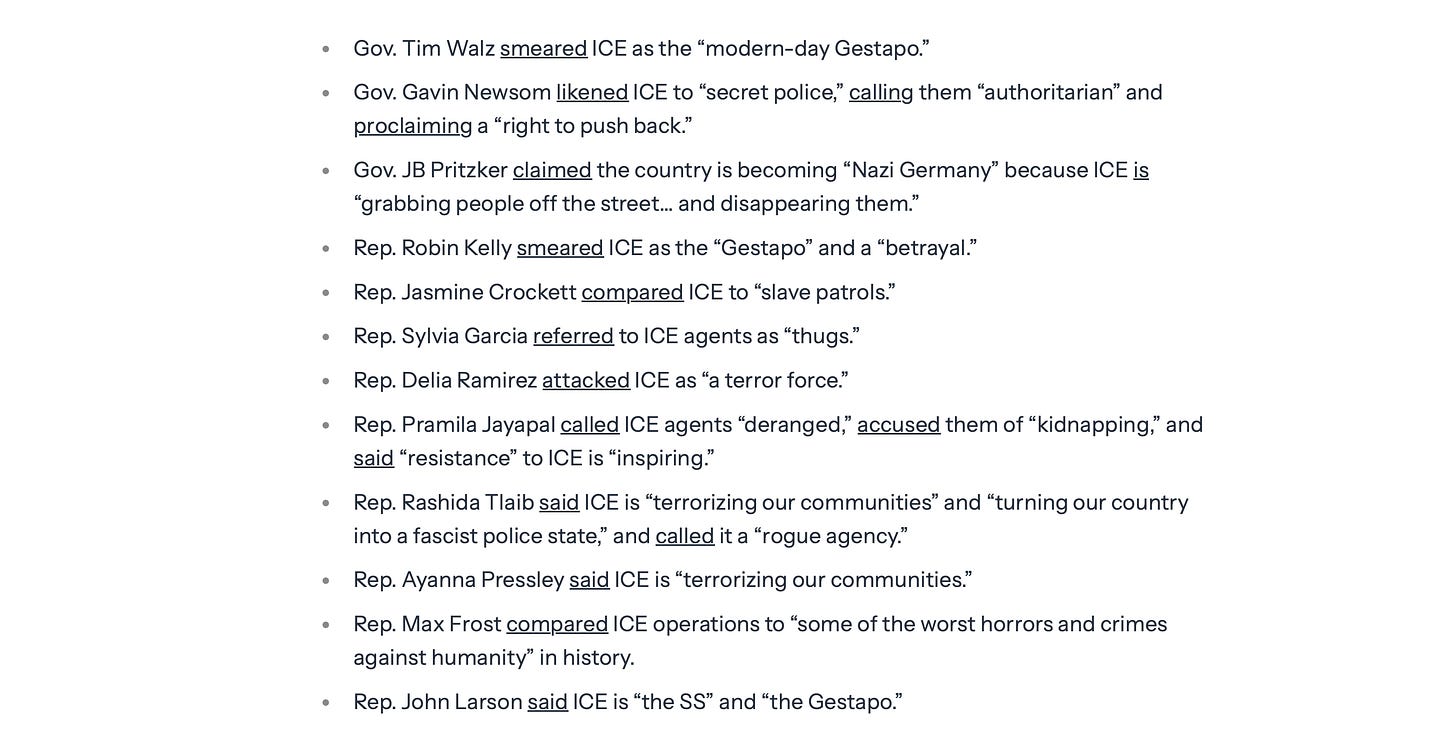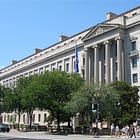The White House Published a Political Hit List, During a Historical Spike in Right-Wing Violence
The risk of violence hasn't stopped the Trump regime from creating a list of their targets
Written by Dominick Skinner | 7 October 2025
On September 26, the White House released an op-ed that claims to be an explainer, but contains little more than a list of names for fans of the regime to target. It accused Democrats of fueling “bloodshed,” named them one by one, and tied political criticism of ICE to violence against federal officers. The regime wants you to believe that this is somehow a normal thing to have on the White House website, but it was state messaging, much like what one would expect in the USSR, not the USA. This was accusation, dressed in the language of governance and aimed towards the politicians that Trump sees as the enemy.
The timing couldn’t have been more dangerous. Across the country, the temperature was already past boiling. In Minnesota, two legislators were gunned down by a man who kept a handwritten list of seventy names. In Utah, Charlie Kirk was murdered at a campus event, and the online fury that followed turned instantly toward revenge. Teachers, nurses, and city employees who posted criticism were doxxed and threatened. Then in New Jersey a teenager behind the wheel of an SUV mowed down two women after sharing messages about “getting even for the disrespect.” An unmistakable chain of anger has swept the USA, and the regime is desperate to turn that anger against their political opponents.

And while all that violence unfolded, the government chose to publish an article naming its political opposition as the reason people were dying. To those already steeped in the language of vengeance, it sounded like confirmation from the top. To everyone else, it felt like a door quietly closing on the idea that disagreement is still safe, that political disagreement is still an option.
In South Carolina, Judge Diane Goodstein’s home burned after she ruled against a Trump-aligned case, and after Stephen Miller accused judges of ‘insurrection.’ She’d received death threats in the days before the fire. Her husband and son barely survived the smoke, and investigators still haven’t said what caused it, but they don’t need to for the symbolism to be seen.
This isn’t new. Every authoritarian wave begins with a list, not always explicit, but always understood. Germany had its “internal enemies.” McCarthy had his communists. The Philippines had its “drug protectors.” Now America has “the radical left.” The vocabulary changes, the purpose doesn’t, once the government defines opposition as danger, repression writes itself.
There’s a reason that language matters, words decide who people think deserves protection. When the state labels one group violent, it tells another they’re righteous for striking first, and we already see that alive in the USA right now. When the president’s website calls opponents dangerous and no one inside government objects, it’s a threat to democracy itself, in a year when US democracy is already so fragile.
The article on the White House website will live on as an ignored footnote in history, but the message has its audience, and that audience is remarkably violent. It circulates in Telegram groups and campaign rallies, where the idea of enemies inside the border feels like common sense again. The same phrases that appeared on WhiteHouse.gov now echo in threats sent to reporters, judges, and protesters. Once language like that escapes the marble halls, it doesn’t come back.
History won’t remember the White House’s phrasing, but it will remember the atmosphere it endorsed. The year 2025 has been a sequence of political funerals, of names turned into hashtags and hashtags turned into graves. The administration didn’t light every match, but it published this list, and in a time like this that’s close enough to a spark to worry anyone.





